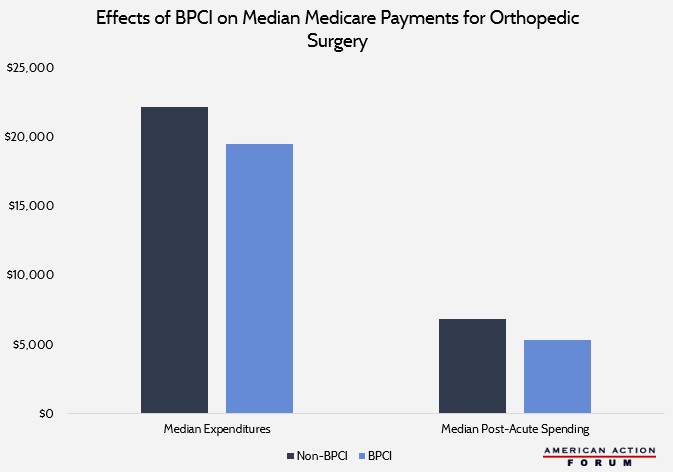Weekly Checkup
January 10, 2020
Candidate Health Policy Proposals Not Aligned with Voter Concerns
In less than a month, voting begins in Iowa in the Democratic presidential primary, and health care is one of the top issues for voters. A plethora of polling tells us that voters are concerned about rising health care costs, so of course the candidates are fixated on … not costs, but coverage.
Recent polling commissioned by the Bipartisan Policy Center (BPC) found health care to be the number one issue for voters in 2020. Fifty-six percent of voters nationally listed health care as one of their most important issues when thinking about who they will vote for; the economy broadly came in second at 44 percent. Democrats and Independents cited health care more than any other issue as one of their top concerns, but even among Republicans it was the third-most mentioned policy concern.
It isn’t surprising, then, that health care has been a major topic among Democratic contenders. But the BPC polling digs deeper, showing that what voters care about most is the cost of health care. Among the top four health care issues cited by voters, three are explicitly about costs. In other polling, conducted by CBS last fall, 66 percent of Americans said health care costs are the nation’s number one health policy challenge, while 56 percent cited universal insurance coverage. Only 45 percent said that improving quality was their top concern.
All of this makes sense: Americans are largely happy with the care they receive, and a majority of Americans think their own health care is affordable. But issues such as surprise medical bills, increasing pharmaceutical prices, and the growth in out-of-pocket costs have made Americans nervous that they won’t be able to afford care in the future.
Nevertheless, the Democratic presidential candidates have chosen to focus on, wait for it, expanding coverage. Medicare-for-All (M4A), Medicare Buy-in, and even many proposals to build on the existing foundation of the Affordable Care Act (ACA) are all primarily aimed at addressing activists’ disappointment that the ACA didn’t cover more Americans. Notably, these proposals are not focused on bringing down health care spending.
Expanding coverage in and of itself won’t stem rising health care costs. If anything, the type of single-payer system Senator Sanders is advocating will lead to increased utilization and increased spending. Voters seem to understand this fact, as overall support for a M4A system is low. According to BPC’s polling, when given the choice between repealing the ACA, enacting M4A, or the nebulous “Improving the current health care system,” more Americans surprisingly support repealing the ACA (23 percent) than passing M4A (22 percent). And new polling from the Kaiser Family Foundation found Democrats prefer elected officials focus on improving the ACA (51 percent) over enacting M4A (38 percent).
Not only is a focus on coverage strategically questionable, but the problem of the uninsured is smaller than it looks at first glance. The most recent figures show that roughly 28 million individuals are still uninsured 10 years after the ACA’s passage. In some ways, for many progressive voters, the original sin of the ACA is that it didn’t achieve universal coverage. But the majority of those who are uninsured today do have coverage options, either through an employer or public insurance programs they have simply not signed up for. The number of Americans who are truly lacking coverage options is relatively small—most obviously the 2.4 million adults below the federal poverty line who live in states that didn’t expand Medicaid.
It will be interesting to watch how all of this plays out, but as of right now Democratic candidates and voters seem to be talking past each other.
Chart Review
Andrew Strohman, Health Policy Data Analyst
In an effort to find alternative health care payment models that can reduce costs while maintaining quality, the Affordable Care Act created the Center for Medicare & Medicaid Innovation (CMMI). One of CMMI’s proposals is Bundled Payments for Care Improvement (BPCI), which links or “bundles” payments for multiple services.
Results so far indicate that BPCI could reduce costs for some pre-planned medical procedures. A 2017 study in the Journal of Arthroplasty compared Medicare payments for overall orthopedic surgeries between non-BPCI and BPCI patients. The study found that the median expenditures were 12 percent lower for BPCI patients than non-BPCI patients, as displayed below, while median post-acute spending was 22 percent lower for BPCI patients. Corroborating these results is a 2017 JAMA study on average joint-replacement costs for Medicare patients, and other evidence indicates BPCI patients undergoing total joint replacement could have shorter stays in the hospital and fewer discharges to inpatient facilities.
On the other hand, a similar study comparing these payment models for Coronary Artery Bypass Grafts found significant increases in costs for BPCI patients. While more research is needed, this last finding may suggest a more niche role for BPCI with pre-planned orthopedic procedures, but not for emergency cardiac surgeries.
Data obtained from the Journal of Arthroplasty
From Team Health
Daily Dish: Health Care Costs – AAF President Douglas Holtz-Eakin
Solving the challenge of rising health care costs requires understanding what is driving those costs in the first place.
Comparing the Recent Drug-Pricing Reform Proposals – Director of Human Welfare Policy Tara O’Neill Hayes
This comparison of recent drug-pricing reform legislation now includes new Senate legislation that largely mirrors the proposal from House Republicans.
Worth a Look
Wall Street Journal: California Looks to Launch Its Own Prescription-Drug Label
The Hill: Kansas leaders announce breakthrough bipartisan deal to expand Medicaid











